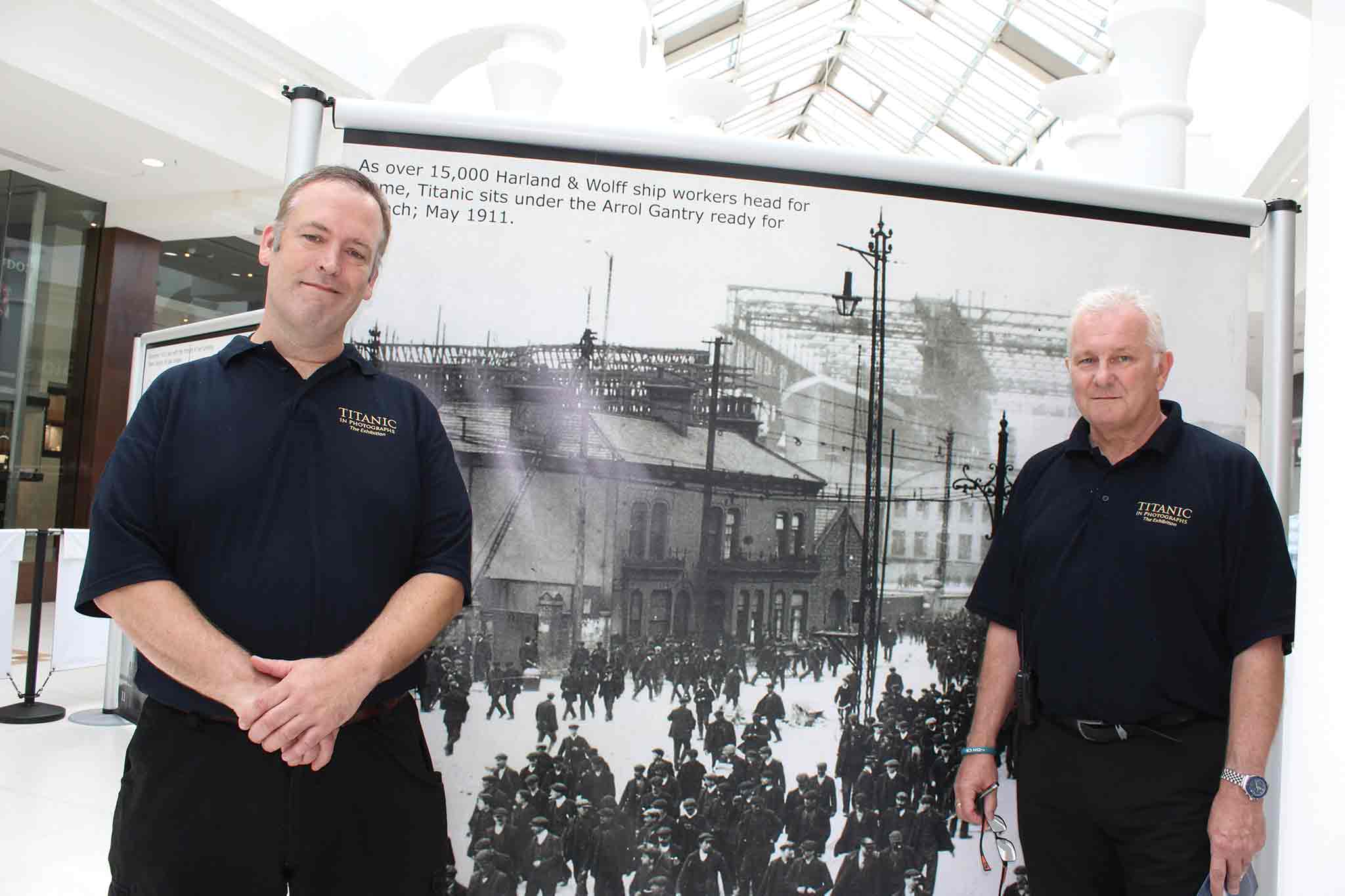Wandering around the Titanic in Photographs exhibition with its chief curator David Scott-Beddard and Titanic historian Tarn Stefanos, it’s clear that their love for all things related to this luxurious liner runs deep.
As they relay the intriguing personal stories of some of the artefacts on display, and point out the intricate details in some of the fascinating photographs, their passion and enthusiasm for the world’s most infamous ship is positively palpable.
That’s probably because both men, along with the exhibition’s co-curator John White who cannot attend our exclusive interview today, have been intrigued by the ill-fated vessel since they were boys.
This eventually led to David and John setting up their company, White Star Memories, and scouring the world’s Titanic auctions in order to procure pieces which now make up their impressive collection, currently on display in Tunbridge Wells’ Royal Victoria Place.
It includes everything from Delft blue gold-rimmed china plates used in the à la carte restaurant to hand-painted tiles from the boat’s Turkish baths. Then there is the sheet music Titanic’s band leader Wallace Hartley used as he and his group played on – despite sinking into the icy waters below.
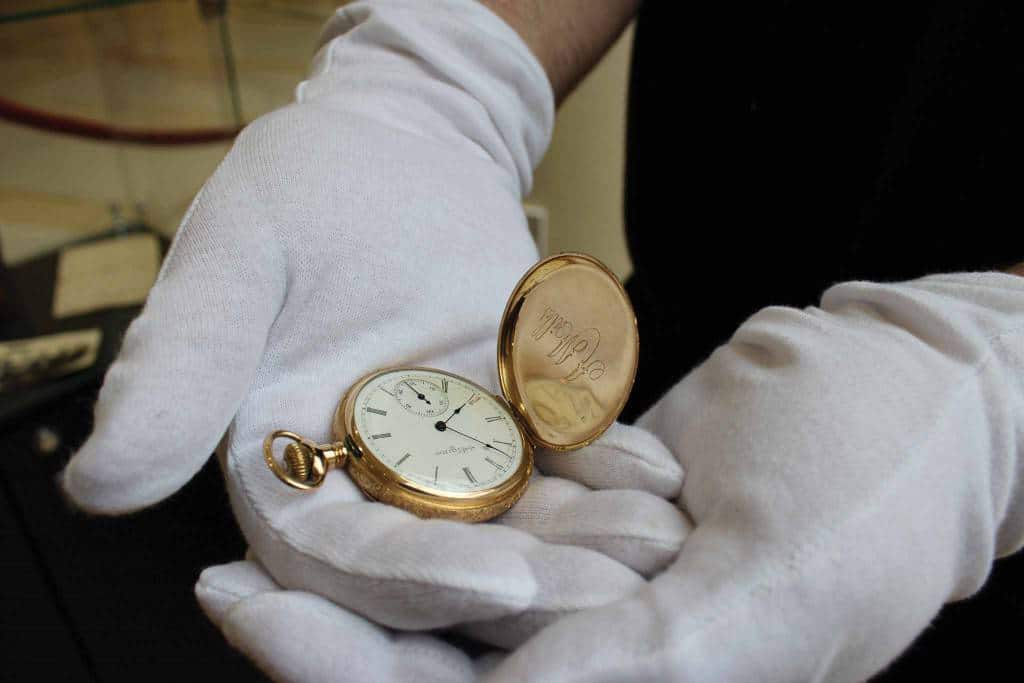
“We spent two and a half years developing, designing and constructing this exhibition,” explains David.
“It is based on the bestselling book called Titanic in Photographs by the world-renowned author Daniel Klistorner, who lives in Australia.
“We have a selection of 29 double-sided photographs which have been blown up on to two metre-square panels.
Doing so has given us access to gaining a lot more detail. Next to each picture there is a glass cabinet with something that you can actually see in the image. So the whole experience is to bring the photographs to life and put the visitor right there back in 1912.”
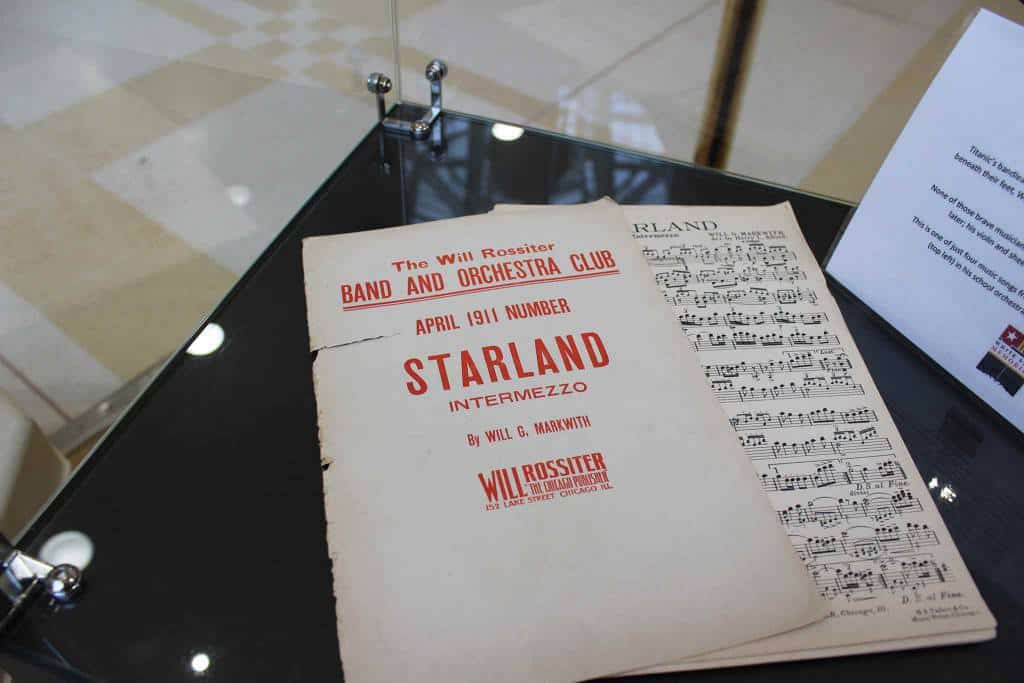
This is only the second time that Titanic in Photographs, which boasts over 130 pieces of memorabilia, has appeared in the UK – the first being in Milton Keynes, where White Star Memories is based.
Having already toured here and in Moscow, their next stop is Brazil and then the United States, but they have also had interest from South Africa, Italy and Germany. “Even the most obscure places have Titanic societies,” chuckles David.
The show is divided into three different areas dotted around Royal Victoria Place and starts with the design, construction and launch, so there are lots of interesting pictures of men working on the huge task of creating Titanic and others which depict its vast iron rivets and coal burners that used over 600 tonnes of fuel a day.
As we pass by one particular photo of workers leaving the Harland & Wolff shipyard in Belfast after a hard day’s gruelling work, David poignantly comments: “It hit me when we were putting this exhibition up here that none of these people are alive any more. I know it’s well over 100 years ago, but I just find that incredible.”
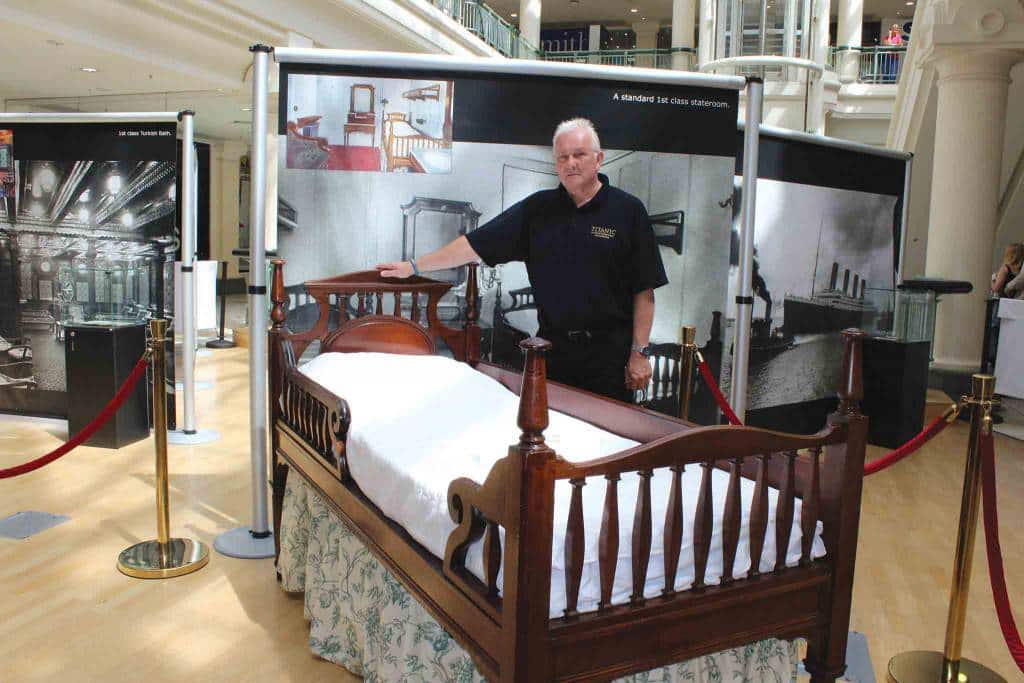
The second part of the exhibition focuses on Titanic’s grand, sumptuous interiors as well as those of her sister ship the Olympic, which was scrapped in 1936.
In this particular area the visitor can view interesting finds such as the fancy first-class Spode crockery used on board, elaborate gold candle sconces and specially commissioned Stuart Crystal decanters.
“All this holds an inexplicable fascination for me,” says Tarn as he removes a piece of precious china from its case. “It’s a passion.”
The final area of the exhibition focuses primarily on Titanic’s fatal journey, but David is quick to point out that this is not a doom and gloom scenario.
“We don’t dwell too much on the disaster because we want you to experience the opulence and splendour of Titanic,” he says. “We want people to appreciate just how fabulous she was.
“People are fascinated and captivated by the detail in the photographs, and because they were originally taken on a glass plate camera they’re better quality than the digital ones we take now. Blow those up and they’ll pixelate.”
Although there are no photos of the ship sinking there are a few of the lifeboats and the rescue ship RMS Carpathia which picked up the survivors.
One of the most moving pieces I personally find while browsing around is a Titanic lifeboat sign which is displayed next to a corsage of flowers.
I am also touched by a vintage black Steiff bear that’s on display alongside a small sepia photo of a toyshop. I ask David the significance of these pieces.
“Steiff commissioned a number of teddy bears to be sold in order to raise money for the orphans who lost their parents in the Titanic disaster,” he says. “In the picture you can just about make out one of them in a toyshop window.”
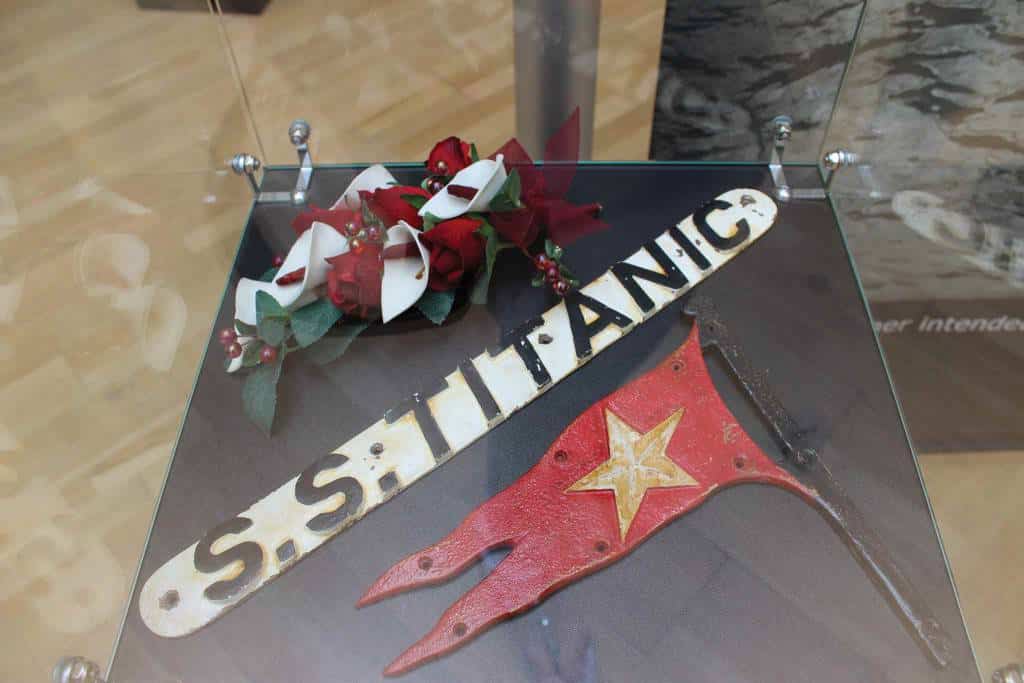
Emotional and personal stories aside, the idea of the exhibition is that you can dip in and out of it. “You are not tied to a guide,” adds Tarn. “You can do it at your own pace and in each area there is a large banner with a few paragraphs explaining what you have just seen and why it’s relevant to the story.”
“The thing that sets it apart from other exhibitions around the world,” continues David, “is that you can just pack it all up and move it. It’s like a pop-up museum, which means more people can experience it.”
Although most Titanic treasures are under lock and key in glass cabinets there are a few items that are out on display, such as a weathered valise which would have been used to transport a first-class passenger’s clothing.
Don’t they worry these rare items will get damaged?
“No, people are very respectful,” replies David. “They just want to know the stories behind the artefacts.”
When I ask him to put a price on the value of his collection he is reluctant to answer, but finally says “It’s priceless.”
“We just hope that all this inspires young people,” adds Tarn. “We think it can also open the door to learning about other things: geography, history, social stratification, science,” says the avid Titanic book collector who hopes that the tomes he owns which have ‘passed through many hands’ will also go on to future generations.
His sentiments are echoed by David as we leave the exhibition: “John and I don’t consider ourselves owners of these items but more custodians of them. Our aim is to educate and to preserve the history of the Titanic.”
Entry to the Titanic in Photographs exhibition is free and guides are available to purchase for £5 from the pop-up Titanic shop, which sells lots of memorabilia and gives visitors the opportunity to have their photo taken ‘on board’ the Titanic. It is located on the ground floor of Royal Victoria Place and is open during normal RVP trading hours.
TITANIC TRIVIA
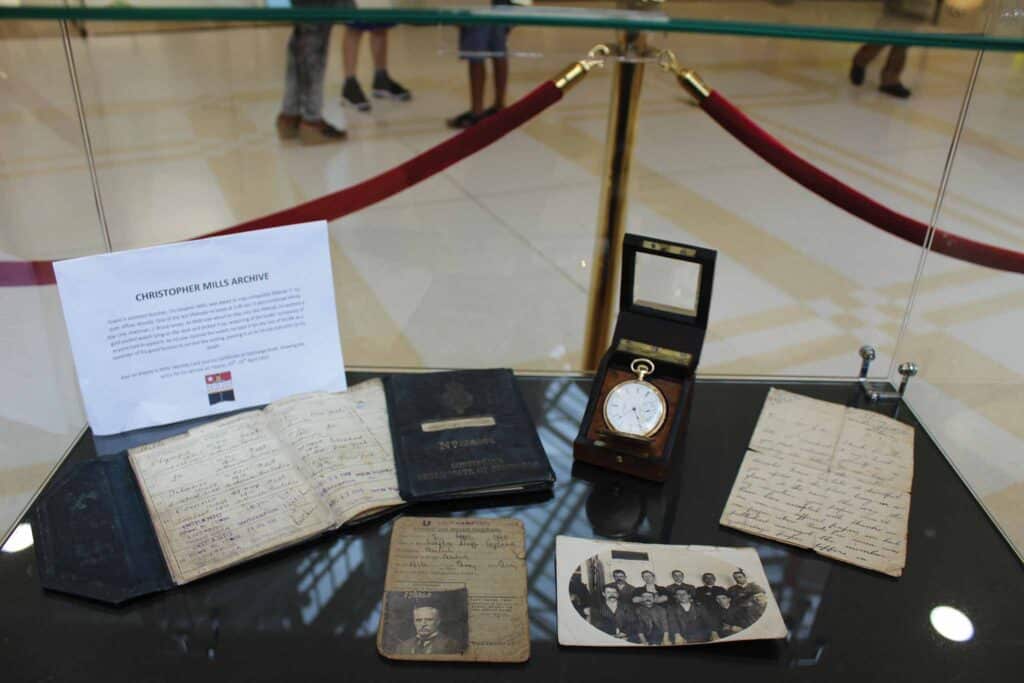
- Interest in the Titanic was raised further by the record-breaking 1997 film which starred Leonardo DiCaprio and Kate Winslet.
- Here are some interesting Titanic facts to bring on board at your next quiz night or dinner party:
- Originally, studio bosses wanted Tom Cruise to play Leonardo’s role of Jack Dawson
- It cost more money to make James Cameron’s Titanic than it did to construct the real ship
- Titanic held the record for the movie that made the most money at the box office – £1.843billion – for over 12 years until it was overtaken by the film – Avatar – another of James Cameron’s creations.
- The film was nominated for 14 Academy Awards, the largest number of Oscar nods for any movie
- After writing the character of Jack Dawson, the film’s director, James Cameron, discovered that there had been a person called J Dawson on board the Titanic
- When filming the rescue scenes in Titanic Kate Winslet was one of only a handful of crew members not to wear a wet suit in the freezing water
- When we see Leonardo’s character Jack sketching Kate’s character Rose, his hands are actually those of James Cameron. His famous Rose artwork sold at auction in 2011 for £20,000
- The line ‘I’m king of the world!’ said by Leo was actually ad-libbed and not in the script
- James Cameron wanted the film’s 150 main extras to behave exactly like people did back in 1912, so he hired an etiquette specialist to coach them all
- In 1995, James Cameron hired the Russian vessel Akademik Mstislav Keldysh and its two submersibles to film some of the real Titanic wreckage which was included in the film
- Cameron made a total of 12 dives to film the underwater close-ups at a depth of 12,500 feet below the North Atlantic


